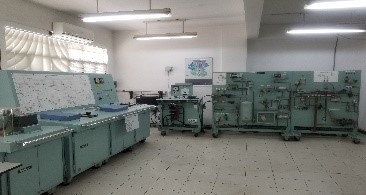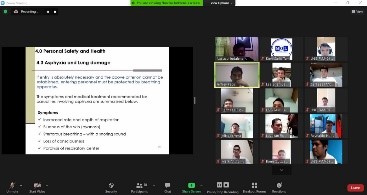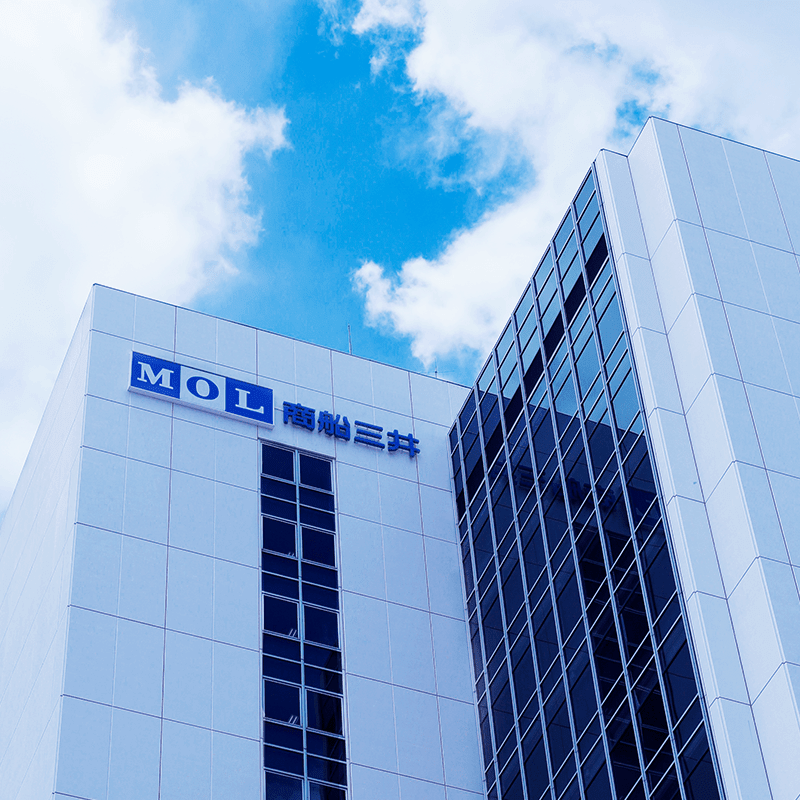BLOG
Adjustments & effort done to set online training course on track even under COVID-19
- General Shipping
2021.10.05
The COVID-19 has changed the world, but the logistics that support people's lives will continue to move. And it is necessary for seafarers who support logistics to have thorough safety awareness in any age. To keep safety awareness, we, MOL group, don’t stop training and education even in this tough situation.
How we keep going? The answer is through “online.” This blog will show you what we provide through online and tell you how we struggle to provide training programs from the instructors point of view.
Introduction of MOL Training Center (Phils.), Inc.
In February 2000, Magsaysay MOL Marine, Inc. (MMMI) established a maritime training department exclusive for their seafarers. After 5 years, MOL decided to separate from MMMI and registered in the name of Mitsui O.S.K. Training and Review (MOTR) which was renamed to MOL Training Center (Phils.), Inc. or MOLTC(P) in 2010. The main sponsorship is from Mitsui O.S.K. Lines, Ltd. (MOL) of Tokyo, Japan, and in active participation of MOL owned and managed vessels distributed among their Shipmanagement companies, and its Manning Agency,
With its vision to continue as a leading training provider for MOL, our team of fifteen (15) industry expert and MOL-trained instructors are the backbone of MOLTC(P)’s top-notch training. They stay current on technology and industry trends through field visits, peer review meetings and company personnel development.
The up-to-date facilities and training methodology put us in a position to meet the requirements of an outcomes-based education, a necessary framework to ensure quality on all training deliveries.
Our training facilities and materials include the following:
*Bulk Carrier Training - T&S, BHPO, BCF *Hazard Experience Training
*Familiarization Training in MooringEquipment *Galley Equipment
*Wood Chip Carrier Maintenance and Handling *Fuel oil Purifier
*Level Experiment Apparatus *Diesel Engine B&W S50MC
*NABCO Training Equipment B&W S50MC *Turbocharger MET
*Hydraulic System/ Computer *LNG-Line Diagram Panel Board
*Videotel *Liquid Cargo Handling Simulator
*Ship Handling Simulator *PCC training materials
*Marine Steam Turbine Simulator

NABCO Training Equipment B&W S50MC

Liquid Cargo Handling Simulator

Marine Steam Turbine Simulator
Interview of an instructor at MOLTC(P)
Now let’s call an instructor at MOLTC(P) and ask something.
Q1. Please tell me about your self.

I am Cathy A. Nicolas, As a Research & Development and Operations Resource Head/ Quality Management Representative, I am responsible for the overall preparation and submission of the organization’s training schedule and other necessary logistical requirements and manages the course development and improvement activities, including the conduct of research essential in improving the MOLTC(P) courses and methodology.
Q2. What kind of training courses we provide through online?
Since June 2020, MOLTC(P) has been delivering online the General, Dry Cargo, Tanker/LNG, Engine, and Catering courses. All of the soft-skills courses are 100% delivered online while those with skills/practical parts are delivered under the Blended Learning Approach (BLA - a combination of online and face-to-face).

(1)

(2)

(3)
Above pictures are online deliveries of (1) LNG Familiarization Course (2) Risk Management and Incident Investigation using the breakout session feature of zoom where the instructor distributed his trainees into 3 groups for their workshop. After each group have discussed, someone from each group will present the results to the whole class and (3) Engine Management Course wherein the instructor is using the onscreen whiteboard feature to further explain the Thermal & Mechanical Efficiency Power Distribution diagram.
-
Q3. What is the difference between an online course and a face-to-face course, as an instructor?
As a response to the limitations brought about by the Global pandemic due to the emerging infectious disease of COVID-19, MOLTC(P) immediately shifted its training delivery to Blended Learning Approach (BLA). The management decided to set up the platform and provided an orientation before to the actual implementation. For 1 to 2 months, instructors and other stakeholders were assigned to observe each session. This aimed to gather the Post-Feedback Evaluation on areas such as pre-training phase, course structure, course content, delivery, and facilitator. Most of the concerns were: weak internet signal and familiarization of the trainees in using the zoom application platform.
At first, it was a challenge for both, instructor and the trainees, to keep the learning engagement. However, aside from the physical presence and the fact that the face-to-face training is the comfort zone of each instructor, there is not much difference between having the course delivered online and face-to-face. House Rules are still in effect, there were only some modifications to make it applicable for online training.
The pandemic is an opportunity that made the management and even the employees realize that with BLA, training operations can continue moving forward without breaking pace. At the end of each training delivery, the same defined learning outcomes are achieved, be it online or face-to-face.
Q4. Which training course is the hardest to conduct, and why?
During the conceptualization period of the BLA, two of the most considerations were the group activity (in the case of Behavior-Based Safety, Risk Management, and Incident Investigation, among others) and the interactive discussion while the instructors explain the problem solving and drawings on the board (Engine Management Course, Purifier Operation Maintenance, among others).
As we checked the complete feature of the Zoom Application, we found that it has features addressing these two concerns: (1) breakout session (where trainees are distributed per group) and (2) an on-screen whiteboard feature (where the instructor may draw, show, write or illustrate topics for more understanding of the trainees).
Q5. What we are taking care of, in order to conduct an effective online course.
We believe, in MOLTC(P), that the primary factors for effective online training are the familiarization of users (trainee and instructors) and a good internet signal. For trainee’s familiarization and readiness for online training, we are sending them the following materials prior to their schedule: (1) Procedure on how to install zoom on their gadget; (2) House Rules and (3) Course Guidelines. Dedicated laptop units for BLA were purchased, internet signals are consistently monitored and in case of internet problem, we can still proceed using the Local Area Network (LAN) access.
Above all, online training has to be engaging and challenging. It should invite the trainees to participate and motivate them to contribute on the discussion.
Q6. Please tell us the special facilities we are using for an online course.
The online course may be delivered in a classroom in the workplace or maybe from home. The requirements are the following: good internet connection and a reliable laptop unit (with Zoom Application platform and necessary training materials).
Q7. Please tell us the issues we face when we first started the online course, and how we overcome those issues.
The familiarity with the different features of the zoom application and monitoring while ensuring the participation of each trainee.
After several deliveries, the instructors get to familiarize the features of zoom and staff is assigned to monitoring and addressing technical difficulties.
Q8. Please tell us the remaining challenges , and how we are planning to deal with Them.
Since technical glitches still do happen at times, MOLTC(P) is continuously looking for ways on how to be proactive in addressing such concerns. In case of technical issues, we have a designated staff who acts as the sole point of contact for any queries or issues that the instructor or trainees might encounter throughout the course.
New Normal
With complete guidelines on the implementation of online training, learning is indeed possible. Soft skill courses are found effective through online delivery. The same learning outcomes are achieved while maintaining interactions among the trainee and instructor. It is a matter of being used and accepting the “new normal” of training delivery.
With the management and each employees’ involvement and successful execution of the plan of shifting the training methodology from the traditional face-to-face into BLA, it is safe to assume that it is a success.
MOL also offers a full range of its training programs to the wider industry to train the seafarers who are responsible for the safe maritime transportation that is indispensable in our daily lives, thereby contributing to preventing accidents at sea and developing the maritime transportation industry.
Recommended Articles
2022.07.05
- General Shipping
2021.04.13
- Energy
2023.12.19
- General Shipping
2021.08.07
- Eco Friendly
2025.03.18
- General Shipping
Latest Articles
2025.12.09
- Eco Friendly
- General Shipping
2025.12.03
- General Shipping
2025.11.20
- Energy
- General Shipping









